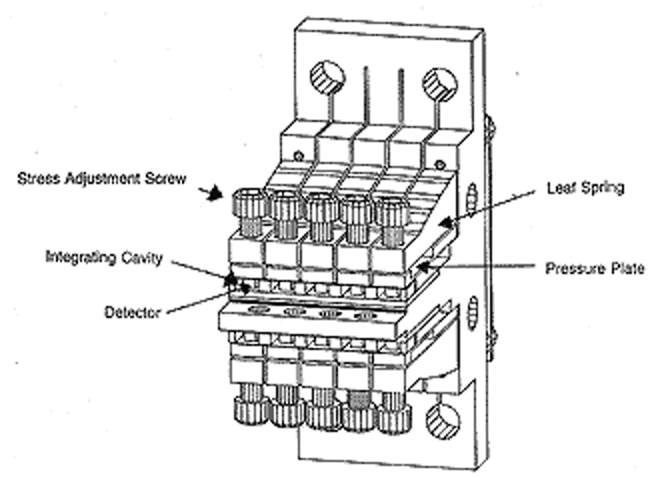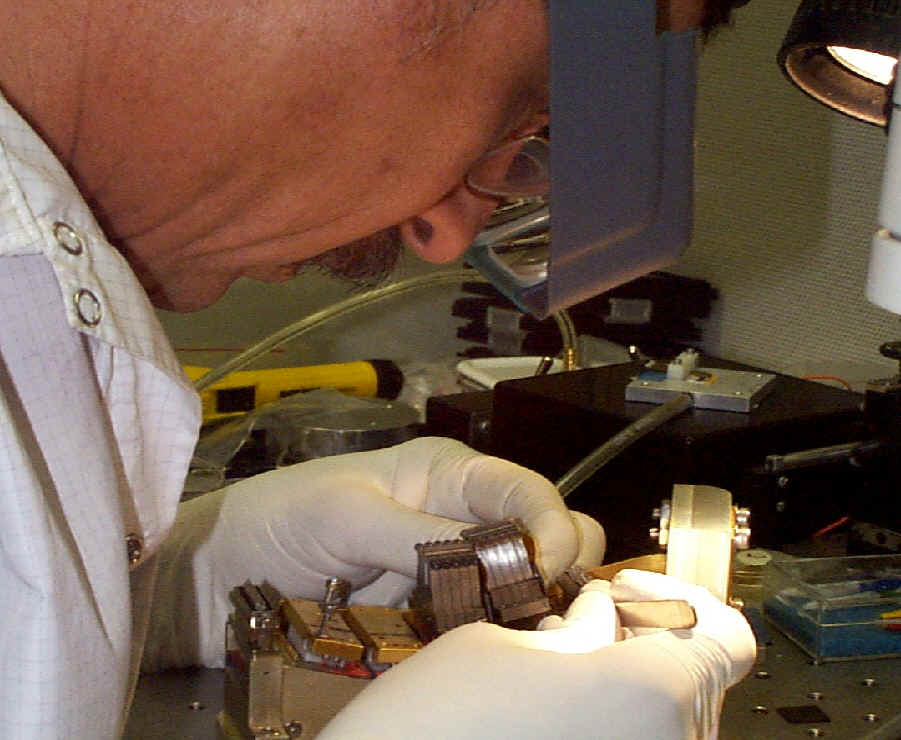| When a semiconductor detector with a p-type impurity is put under stress,
it can detect lower energy photons than it could when unstressed. This surprising behavior
can be understood (with a little waving of the hands) because the photon must break bonds
in the detector to be detected, and if the detector is already under mechanical stress the
bonds are easier to break. This effect was first used in far infrared detectors by MIPS
co-Is Eugene Haller and Paul Richards. The way we have implemented stressed Ge:Ga
detectors is shown in the figure on the right. A multi-fingered, double-sided clamp is
made of very strong steel (Aermet 100), and five detectors are placed on each side of this
clamp. Each detector can be stressed individually by tightening the screw on that
detector's finger, bending the finger like a leaf spring. The stresses are distributed
over the detector by a pressure plate, so it doesn't break. To make a full 2x20 array, we
mount four of these 2x5 modules together, along with condensing cone feed optics to lead
the photons into the detectors. See figure that illustrates the
complete array with condensing cones and heat sink. The 160 micron array was built at the
University of Arizona, with help from Lawrence Berkeley National Laboratory. |
 For a picture of a 2x5 module  . . |



